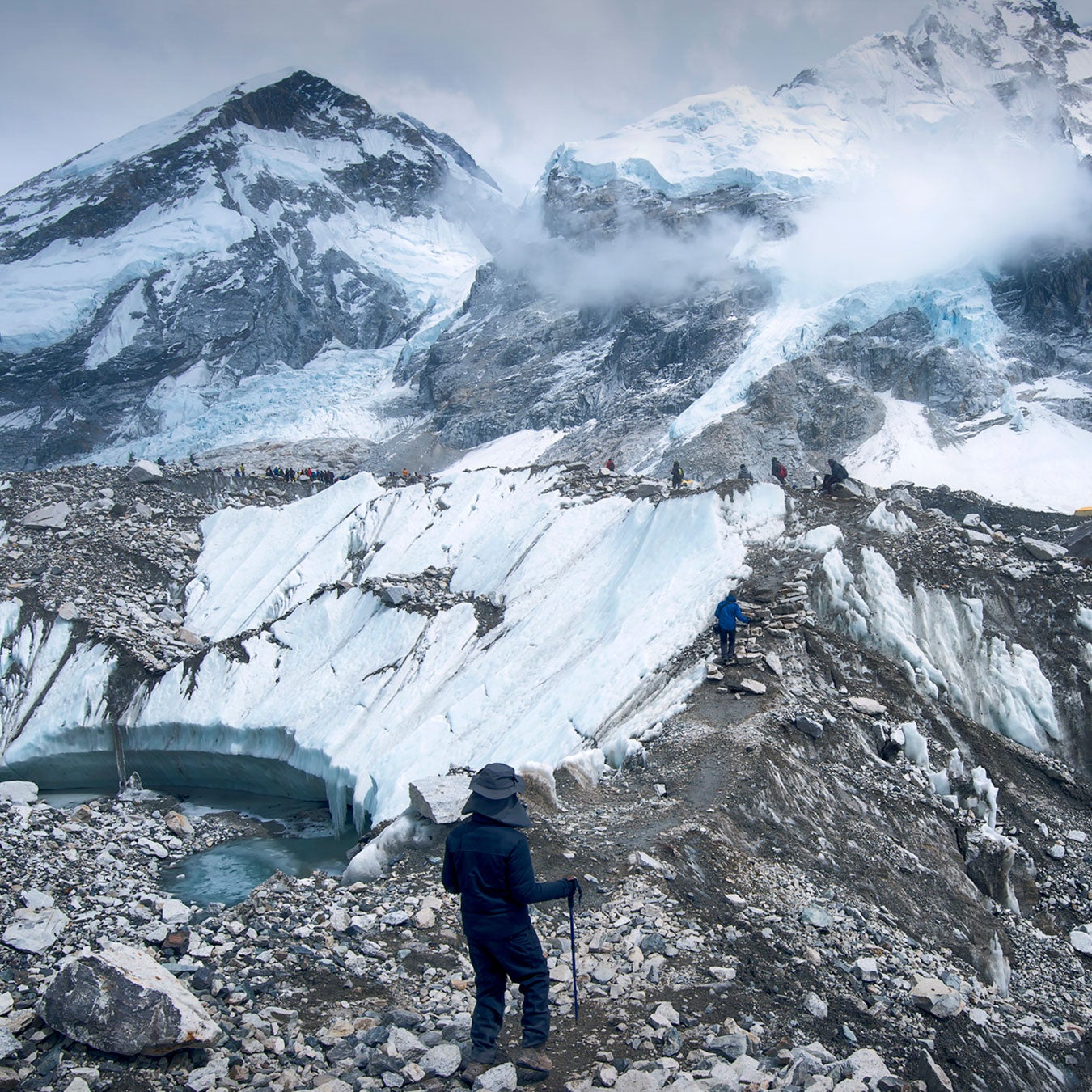Mount Everest has developed an unfortunate reputation as a dumping ground for empty oxygen bottles, tattered tents, and yes, tons of poop. It turns out, the throngs of climbers ascending Everest each year have left something perhaps even grosser behind: their germs.
Researchers at the University of Colorado taken at 26,000 feet on the world’s highest peak and discovered the same bacteria you might find in a toddler’s soggy Kleenex. According to their study, Arctic, Antarctic, and Alpine Research, DNA from bacteria Streptococcus and Staphylococcus is dormant but alive, frozen in ice and rocks on Everest’s flanks.
“It’s as if you had a really cold freezer and sneezed into it, and then opened it years later and found those things still in the freezer,” professor Steven Schmidt, lead author and microbial ecologist at the University of Colorado Boulder, told me. “Mount Everest was our freezer, and it turns out the germs are still surviving there.”
I phoned up Professor Schmidt this week to ask him more about the discovery and the sizable interest in his conclusions. The Everest study generated and , with multiple stories zeroing in on the of the findings: our germs are far heartier than us. Mountaineers try to spend no more than 20 hours inside the “death zone” above 26,000 feet, where oxygen is too low to sustain human life. The strep and staph that Schmidt’s team found had been there for years, maybe decades.
Yes, it was dormant. But when exposed to petri dishes in a laboratory, the samples grew thriving colonies of bacteria, the same way a sick child’s throat culture would.
“Usually you see attrition in samples with DNA being blown away or degrading over time,” Schmidt said. “The fact that we were able to grow things out of those samples means they are able to come back to life fairly easily.”
One conclusion of the study is that bacteria could survive on frigid planets. “I kinda thought that part would make waves,” Schmidt told me. “It’s a hot topic and we’re presenting a different take on it.”
Schmidt and his team are global experts on how microorganisms survive in Earth’s most extreme environments. In recent years they have analyzed soil from the top of Peruvian stratovolcanoes, unexplored regions of Antarctica, and the driest point on the planet. Never before has the team—or anyone, for that matter—studied dirt that came from an elevation this high. The Everest soil was collected in 2019 from the South Col, the ridge just above 26,000 feet that connects Everest with 27,940-foot Lhotse.
It’s one of the least hospitable spots on the entire planet—even for microbes.
“It’s a combination of the cold, which makes the air really dry, and the exposure to ultraviolet light as well,” Schmidt told me. “There’s also the low oxygen level, but for microbes that doesn’t really matter. It’s really the cold that kills a lot of them.”
Fans of Everest know the South Col as the site of Camp IV, the final resting point for mountaineers before they push for the summit. In years past it’s also been the site of organized cleanups to remove garbage and, unfortunately, dead bodies. Schmidt and his team assumed they would find some microorganisms living on the South Col. But the presence of staph and strep surprised them. Both bacteria thrive within the human biome, and researchers assumed the microbes required warm and moist homes to survive.
Plus, the researchers had never come across staph or strep in samples collected from other extreme locations. “We never picked them up, even in the Atacama desert or in Antarctica,” he said.
Schmidt believes the dearth of the bacteria in the other locations is concrete proof that the microbes on Mount Everest were left behind by the thousands of climbers who have coughed and sneezed onto the mountain. The other regions they study aren’t frequented by tourists, adventure seekers, or anyone else for that matter.
“We could do some additional tests to determine if they were blown there by the wind or left by climbers, but we’re pretty confident they are from humans,” he said. “Other places we’ve sampled aren’t visited by humans and we don’t find those things there. So, logically we’re pretty sure.”
What does this mean for the 2023 crop of Everest climbers? It’s probably a bad idea to lick rocks and soil anywhere on the mountain—but we didn’t need a study to tell us that. Perhaps the biggest takeaway is to remember that those tiny organisms that sometimes give us sore throats and tummy aches are even more resilient than we previously thought.


